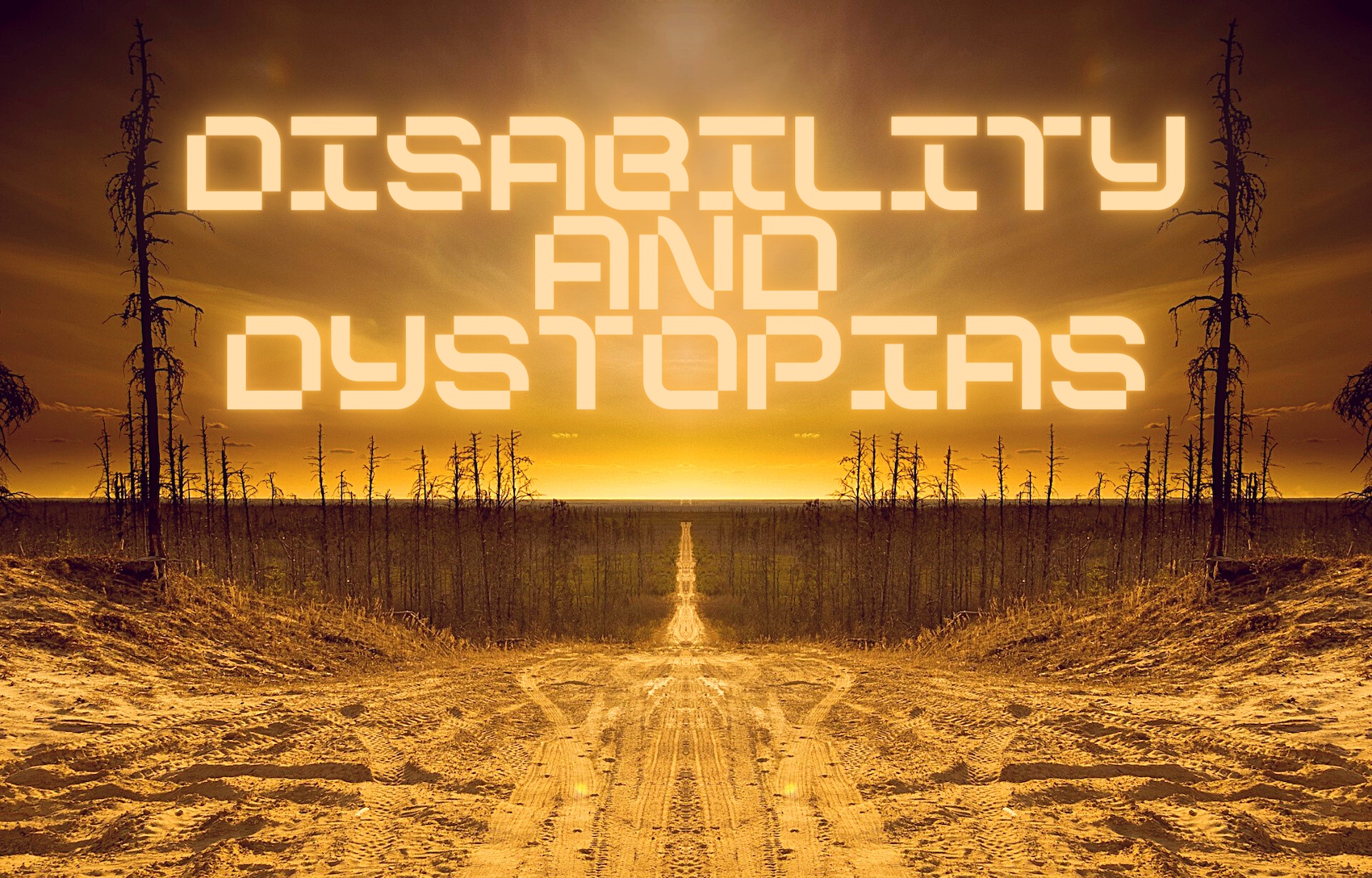AustLit
-
Through the rise in speculative and science fiction in the 1970s-80s in Australia, audiences and writers alike have been encouraged to critically reflect on the possibilities of the future. While some works have envisioned a utopian, hopeful, prosperous future, others have imagined dystopian futures marred by tyranny, environmental catastrophe and bio-technological upheaval.
In dystopian worlds, disabled characters are often central figures as rebels, renegades and revolutionaries pushing back against oppressive regimes, destabilising formal structures of capacity or personhood, creatively producing and engaging with differing bio/technological infrastructure and/or surviving and thriving in post-cataclysmic environments.
It is in these dystopian worlds that ideations of ability, capacity, behaviour, and the body can be radically deconstructed. Through focusing on the experiences of disabled characters in these spaces and de/constructing the body, contemporaneous anxieties around global, national, local and personal politics, the expansion of technology in everyday living, the changing interface between/within bodies and technologies, and imminent environmental disasters, among others are all negotiated, explored and critiqued.
While some works feature identifiable and categorisable representations of disability, often, due to the futuristic setting, alternative models of disability that complicate easy lines of identification challenge conventional notions of what disability is and how it functions.
Through offering different ways of conceptualising what or how bodies and behaviour are and can be in the future, dystopian works open up complex discussions of disability.
This list covers a range of works which can be broadly understood as dystopian featuring disabled characters, themes and/or discussions. This list is in no way exhaustive, but offers a starting point to exploring the rich worlds of disability in dystopias.
-
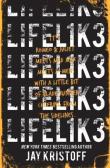 Cover image courtesy of publisher.See full AustLit entry
Cover image courtesy of publisher.See full AustLit entry'On an island junkyard beneath a sky that glows with radiation, a deadly secret lies buried in the scrap. Seventeen-year-old Eve isn't looking for trouble-she's too busy looking over her shoulder. The robot gladiator she spent months building has been reduced to a smoking wreck, she's on the local gangster's wanted list, and the only thing keeping her grandpa alive is the money she just lost to the bookies. Worst of all, she's discovered she can somehow destroy machines with the power of her mind, and a bunch of puritanical fanatics are building a coffin her size because of it.
(...more)The first in a series, LIFEL1K3 features a several disability related storylines. It features lead characters with prosthetics and psychokinetic abilities while also negotiating complex questions about personhood, memory and trauma. Subsequently, LIFEL1K3 opens up discussions of how identification operates in a post-apocalyptic space. While the novel explores disability well for the most part, the closure does undercut potential positive identifications.
The series comprises of two book so far:
-
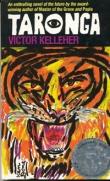 This image has been sourced from online'A bleak but compelling look at the future beyond the nuclear holocaust. Ben comes upon Taronga Zoo, which seems unaffected by the general chaos. But is it?' Source: publisher's website. (...more)See full AustLit entryTaronga centres on protagonist Ben's ability to communicate with animals. While not centrally focused on disability, the novel does have turning points in its narrative that hinge on facial scarring. Significantly, these instances are utilised to articulate a fragility to human nature and an externalised marker of survival in a violent space, specifically as a means for Raja, a captive male tiger, to reevaluate his hatred of humanity.
This image has been sourced from online'A bleak but compelling look at the future beyond the nuclear holocaust. Ben comes upon Taronga Zoo, which seems unaffected by the general chaos. But is it?' Source: publisher's website. (...more)See full AustLit entryTaronga centres on protagonist Ben's ability to communicate with animals. While not centrally focused on disability, the novel does have turning points in its narrative that hinge on facial scarring. Significantly, these instances are utilised to articulate a fragility to human nature and an externalised marker of survival in a violent space, specifically as a means for Raja, a captive male tiger, to reevaluate his hatred of humanity. -
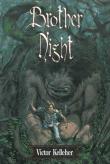 Image courtesy of publisher's website.See full AustLit entry
Image courtesy of publisher's website.See full AustLit entry'Ramon learns that he is the son of the Moon Witch and the Sun Lord, after which his quest for the truth leads him along a perilous and challenging path.'
Source: Google Books.
(...more)Brother Night is a fantasy YA novel that explores themes of belonging, fate and brotherhood. The novel's protagonist, Ramon, discovers that he might be the son of the Sun Lord, Solmak, and that he has a secret twin brother, Lal, allegedly the son of the Night Lord, Luan. Lal speaks with a lisp in a slow, laboured manner, and is described as a giant and as monstrous throughout the novel. Although he is framed as 'ugly', Lal proves to be brave, strong, clever and loving. While the novel overemphasises Lal's ugliness, it articulates a critique of lookism - "prejudice toward people based on their appearance" (Tietje and Cresap 2005, p 31) that is pertinent to broader discussions of disability discrimination. -
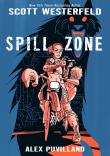 See full AustLit entry
See full AustLit entry'Three years ago an event destroyed the small city of Poughkeepsie, forever changing reality within its borders. Uncanny manifestations and lethal dangers now await anyone who enters the Spill Zone. The Spill claimed Addison's parents and scarred her little sister, Lexa, who hasn't spoken since. Addison provides for her sister by photographing the Zone's twisted attractions on illicit midnight rides. Art collectors pay top dollar for these bizarre images, but getting close enough for the perfect shot can mean death-- or worse.
(...more)Spill Zone is the first in a graphic narrative duology. The narrative follows Addison as she explores and documents the reality-bending world of her old hometown of Poughkeespie, three years after a mysterious incident distorted it. The landscape, buildings, animals and people that were there when the 'spill' occurred have been monstrously transformed and, while there, she must keep her wits about her so she can return to care for her younger sister Lexa. Lexa, having been in the town when the spill happened, has been selectively mute ever since. Westerfeld and Puvilland's graphic style enables Lexa to be an engaging character, giving insight into her thoughts (as well as her doll Vespertine's) and to visually articulate her engagement with the world and people around her.
In the series:
-
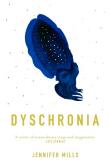 This image has been sourced from online.See full AustLit entry
This image has been sourced from online.See full AustLit entry'One morning, the residents of a coastal small town wake to discover the sea has disappeared, leaving them 'landlocked'. However, the narrator has been seeing visions of this cataclysm for years. Is she a prophet? Does she have a disorder that skews her perception of time (the 'Dyschronia' of the title). Or is she just a liar?
'Mills' novel takes contemporary issues of resource depletion and climate change and welds them to one young woman's migraine-inducing nightmares.
(...more)Dyschronia uses multiple timelines and voices to explore how bureaucratisation and corporatisation affect the lives of a small town of people in the face of ecological collapse. At the centre of the novel is Sam, a young girl who can see the future. Sam's ability to see the future, her 'dyschronia', is rendered as a disability throughout. She physically experiences migraines, nausea, fatigue, but she also has to negotiate the social effects of difference throughout the novel. Mills's description and depiction of Sam's dyschronia expands ideas of difference and disability without minimising more identifiable symptoms or forms of disability. -
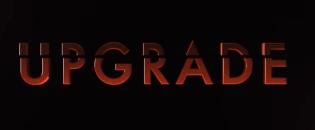 Screen cap from promotional trailerSee full AustLit entry
Screen cap from promotional trailerSee full AustLit entry'After his wife is killed during a brutal mugging that also leaves him paralysed, Grey Trace (Logan Marshall Green, SPIDER-MAN: HOMECOMING, PROMETHEUS) is approached by a billionaire inventor with an experimental cure that will “upgrade” his body. The cure – an Artificial Intelligence implant called STEM – gives Grey physical abilities beyond anything experienced and the ability to relentlessly claim vengeance against those who murdered his wife and left him for dead.
(...more)Upgrade is a sci-fi action revenge film. After a violent mugging results in both his wife's murder and his quadriplegia, Grey Trace (played by Logan Marshall-Green) receives an experimental AI transplant and he sets out to find the people responsible. The film does fall into some typical ableist trappings, particularly around the liveability and viability of disabled lives, but it also raises interesting and complex questions for the contemporary world around surveillance, prostheticisation, technologisation and the potential for AI-human integration. -
See full AustLit entry
'OtherLife is a revolutionary new drug invented by Ren Amari (Jessica de Gouw). It expands the brain's sense of time and creates virtual reality directly in the user's mind. With OtherLife, mere seconds in real life can feel like hours or days of exciting adventures. Ren hopes to use this miraculous technology to heal her comatose brother, but there are other more secretive plans afoot, like selling OtherLife technology to governments wishing to solve prison overcrowding by imprisoning criminals in virtual cells: a use that Ren adamantly opposes.
(...more)OtherLife is a sci-fi thriller film. Ren (played by Jessica De Gouw) develops a form of biological virtual reality that can restructure and alter memories. Her impetus for developing the technology is to hopefully rewire her brother's neural pathways and wake him from his coma. While maintaining an otherwise recreational usage of the technology, governmental and market influences try and pressure her to allow for OtherLife to be used for unethical use. Disability forms a central aspect to the films plot, not only as impetus for Ren's invention, but also as an effect of the unethical use of technology. Like Upgrade, OtherLife poses interesting questions around the ethics of new technological interventions in the human body and mind. -
 Screen cap from promotional trailerSee full AustLit entry
Screen cap from promotional trailerSee full AustLit entryDespite post-dating the third film in the series by some thirty years, this instalment is said to fit in the timeline somewhere between films one and two.
Max Rockatansky, trapped in the citadel of warlord Immortan Joe, crosses paths with Imperator Furiosa, who is on a mission to free Joe's enslaved 'brides' and take them to the Green Place, the Land of Many Mothers.
(...more)Mad Max: Fury Road follows Max (played by Tom Hardy) as he joins Imperator Furiosa (Charlize Theron) on a mission across post-apocalyptic Australia to rescue and flee with the 'wives' of warlord Immortan Joe (Hugh Keays-Byrne). Disability is prominent within the film: Furiosa has a prosthetic arm, Max experiences PTSD flashbacks, Immortan Joe and his sons, Rictus Erectus (Nathan Jones) and Corpus Colossus (Quentin Kenihan) display respiratory aids, as well as Colossus' mobility aids, and there are several background characters with disabilities as well. There have been several positive reviews and discussions of Furiosa and her strength and power within the film, although disability is still overwhelmingly framed through villains and extras. Nonetheless, throughout the film, disability becomes central to an articulation of a brutal post-apocalyptic landscape and discourses of survival.
-
Dr. Dylan Holdsworth completed his PhD at Deakin University, Melbourne, in 2017. His PhD project explored representations of disability in dystopian children’s literature across history, with a specific focus on how disability is constituted in relation to power. He has published two book chapters in 2017: 'More than Puddles: Disability and Masculinity in Alan Marshall’s I Can Jump Puddles' in Disability and Masculinities: Corporeality, Pedagogy and the Critique of Otherness, and '"Conceal, Don’t Feel": Disability, Monstrosity, and the Freak in Edward Scissorhands and Frozen' in Affect, Emotion, and Children’s Literature: Representation and Socialisation in Texts for Children and Young Adults. His research interests include disability, science fiction, dystopian literature, horror cinema, children’s and young adult literature, and Australian literature.
You might be interested in...


